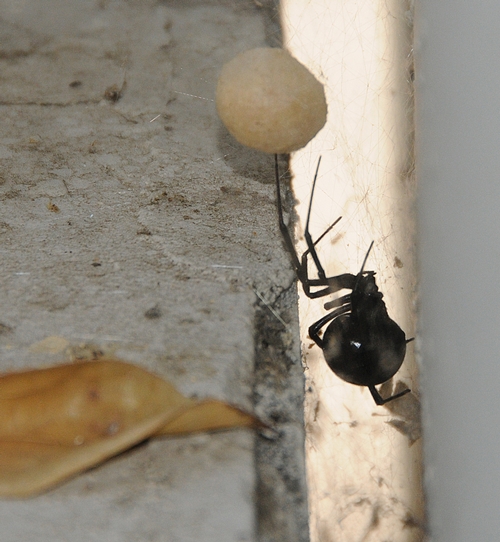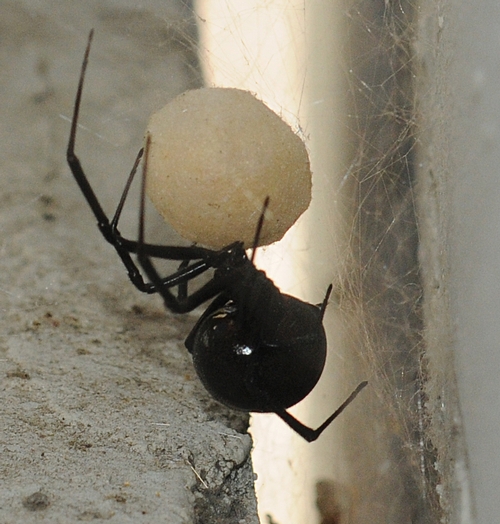The very presence of a black widow spider, shiny black with a globe-shaped abdomen, strikes fear in most people.
And not just on Halloween.
"Many spiders will bite when trapped but black widow spiders (Theridiidae: Latrodectus) are the most dangerous North American species," write Charley Eiseman and Noah Charney in their newly published book, Tracks and Sign of Insects and Other Invertebrates: A Guide to North American Species.
"Their strong venom can kill," agrees George C. McGavin in the Smithsonian Handbooks' Insects, Spiders and Other Terrestrial Arthropods, "but a fast-acting antivenom can be given by injection."
The black widow is a cobweb spider and "the females produce about 200 to 250 eggs, attached to the web in a sac," McGavin says.
So, where can you find black widow spiders? They're usually in more concealed places than the common house spider, which is "found in any dry structure, including houses, basements an barns, as well as under natural 'roofs' such as overhanging ledges," according to Eiseman and Charney.
And, Eiseman and Charney point out, the black widow spider webs are "composed of extremely strong, coarse threads"--unlike those of common house spiders.
McGavin says black widow spiders are commonly found in leaf litter, under stones and in and around buildings.
We sighted one under leaf litter recently at the Harry H. Laidlaw Jr. Honey Bee Research Facility at UC Davis. Its distinguishing mark: the reddish-orange hourglass on its stomach.
Then last week we spotted a black widow spider guarding her gumdrop-sized sac in a secluded area of a UC Davis parking garage.
She didn't pay attention to the "permit parking only" signs.
Attached Images:

Black Widow Spider

Weight Lifting